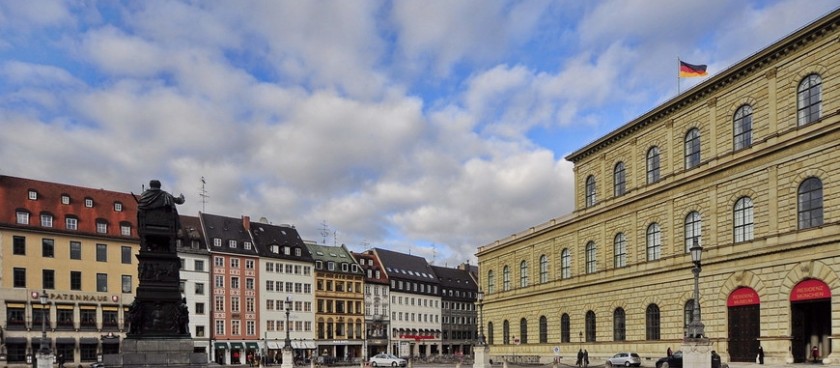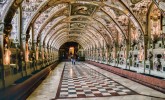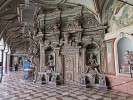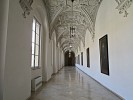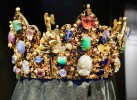- #DE51
- Residenzstraße 1, 80333 München, Germany
- +4989290671
- ResidenzMuenchen@bsv.bayern.de
- http://www.residenz-muenchen.de/
- Working hours*:
Works daily.
April 1-October 15: from 9:00 to 18:00 (entrance closes at 17:00)
October 16 - March 31: from 10:00 to 17:00 hours (entrance closes at 16:00)
The museum is closed on January 1 and December 24, 25 and 31. - Prices*:
Museum - 9 euro;
treasury - 9 euro;
Children under 18 years old - free. - * - opening and closing times as well as entrance prices, are subject to alterations without notice. Visitors are advised to check before visiting.
- 48.1417835, 11.5794753 Copy to clipboard Copy
-
#Museums
Therefore, this palace complex is sometimes called the residence of the Bavarian kings or the residence of the Wittelsbachs. Today the Munich Residence is the largest palace complex in Germany.
The residence consists of 10 courtyards, 3 museum complexes - the Royal Apartments, the Old Residence and the Party Hall, and has more than 130 rooms.
In addition, the complex includes the Treasury, the Theater of the Residence, as well as its garden with fountains. The Munich residence is considered one of the most important collections of fine art and sculpture in Europe. In addition to the richness of interior decoration (especially in the Royal Chambers), the Munich Residence is the real collection of architectural history since the buildings of the complex are built in a variety of architectural styles that dominate in a particular historical period. Here you can see the architecture of the Renaissance, Baroque, Rococo and Classicism periods.
They say it will take at least two weeks to explore all the halls, palaces and corners of the park.
The history of the Munich residence dates back to 1358 from the Neuvest castle, the remains of which still preserved in the residence's pharmacy garden. Bavarian princes hid here from popular riots. The Bavarian royal dynasty of the Wittelsbachs did not interrupt from 1240 until 1918, so everything that once created in the Munich residence was created for the benefit of one family. With each new king, the residence acquired a new hall, palace or garden. So, Wilhelm IV created the first garden, Albrecht V - the Festive Hall and the Kunstkamera, where, according to the custom of that time, outlandish exhibits collected. When there were too many exhibits, the Antiquarium was built, which occupied the entire first floor. The antiquarian was the first museum on this side of the Alps. Later, in the 17th century, Maximilian I built the Wittelsbach fountain with allegorical figures on the four main Bavarian rivers.
The Baroque times presented the residence with luxurious rooms: the Shooting Hall, two hallways, the Golden Audience Hall, the Large Study, the Bedroom, the Little Chapel and the Heart Study. A gallery, library and garden also appeared. The king's wife Henrietta Adelaide of Savoy, who built them, embodied the architecture of her native Italy here.
Already in the 18th century, one of the most significant parts of the residence was built - the Old Rococo Theater, intended only for visiting by the courtyard. More than 1000 trees brought from the lands of Staffel Lake were used in the construction.
Treasury
The Bavarian kings were distinguished by a special passion for collecting jewellery and gold jewellery, precious stones, enamel and crystals. Their extensive collection is presented in a special section of the Munich Residence - the Treasury. Its history began in 1565 when Duke Albrecht V century. his will ordered the creation of a fund closed to the public for the jewellery collection. His descendants have greatly expanded the collection. In addition, religious relics were added to the collection. However, they could often be counted as jewellery.
The collection was constantly changing its location in the palace due to its ever-increasing size. It acquired its modern look in 1958. The treasury is located on the first floor of the Royal Apartments, occupying 10 rooms.
The collection of the Treasury of the Munich Residence is unique and one of the most valuable in the world. The Prayer Books of Emperor Charles (860), the life-giving cross of Saint Henry II, the cross of the Hungarian queen Gisela of Bavaria (about 1000), the crown of Henry II (about 1270), the Gothic crown of one of the English queens (1370). Visitors are most often attracted by Queen Teresa's ruby jewellery.
The Treasury, like the rest of the museum, has very strict security rules. Backpacks are not permitted.
Opening hours of the Munich Residence
The Munich residence is open to visitors all year round, except for January 1, December 24, 25 and 31, well as Fat Tuesday (Tuesday in the week preceding Catholic Easter).
From April 1 to October 15, the opening hours of the Munich Residence are from 9:00 to 18:00 (admission until 17:00). From October 16 to March 31 - from 10:00 to 17:00 (entrance closes at 16:00).
The treasury is open at the same time.
The parks of the palace complex can be visited every day, but the fountains are only open from April to October from 10:00 to 14:00.
